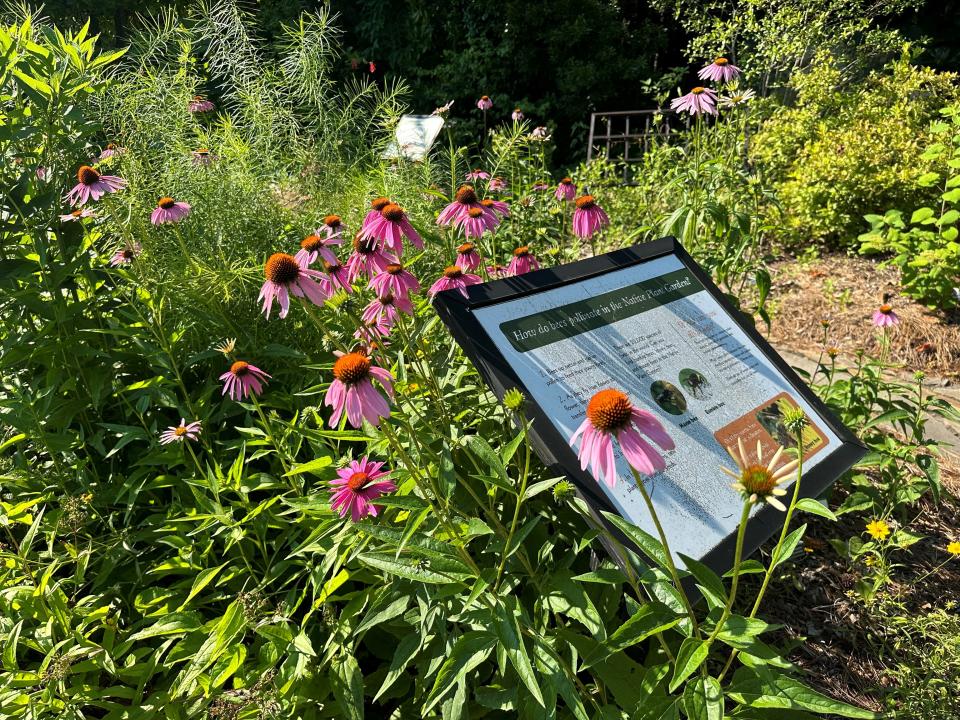This North Carolina hidden gem provides a sense of peace and tranquility free of charge
From overlooked roadside attractions to offbeat museums and obscure natural wonders, Local Hidden Gems will showcase some of the unique and unexpected treasures that make America extraordinary. We will emphasize charm, surprise and delight.
Local hidden gem: New Hanover County Arboretum
With the North Carolina beaches getting crowded with tourists, you may find yourself wanting to escape the business of it all and might even be searching for more cost-effective options.
Although this spot in Wilmington, North Carolina, has an estimated 60,000 to 70,000 visitors each year, receptionist MaryBeth Beasley said some lifelong residents tell her they have just discovered it.
The New Hanover County Arboretum, located at 6206 Oleander Drive, is open every day from 8 a.m. until 5 p.m. and you won't have to worry about paying to park or even paying to enter. Visiting this hidden gem is free and includes seven acres of gardens and plantings. It also serves as a "horticultural laboratory" for on-site Cooperative Extension staff.
Find more local hidden gems: A spotlight on the American treasures in our backyards
The Arboretum's history
In the late 1970s, New Hanover County began to shift from a rural farming county to the rapidly developing urban county that it is today. The county's Cooperative Extension saw a need to expand its programming to meet the needs of both consumer and commercial horticulture. According to the Arboretum's website, the Arboretum grew out of the vision of Charles E. "Pete" Lewis, who was the county's extension director from 1979 to 1989, and a group of dedicated people who shared his dream.
What was once the site of the Bradley Creek School opened as the Arboretum on Oct. 5, 1989, after four years of hard work from volunteers. The Bradley Creek School was destroyed in a fire in 1982, and in 1984, the New Hanover County Board of Commissioners appropriated $200,000 to turn the school's site into a home for the Arboretum and the county's Extension Service.

About the gardens
The Arboretum has many different gardens with labeled plants as well as educational displays to learn more about plants and wildlife throughout the gardens and throughout the Cape Fear region. New Hanover County Cooperative Extension and Arboretum Director Lloyd Singleton said the arboretum's gardens are a great public demonstration as visitors can get an idea of what grows well.
Here's a look at some of the different gardens:
Rose Garden: In this garden, you can find a circular path with many different kinds of roses in varying colors and sizes. Each type of rose has a unique name, and there are many hybrid tea roses.
Native Plant Garden: This garden features many different plants native to the region, including hydrangeas, irises, butterfly weed, and St. John's Wort, just to name a few. The garden also has different educational signs for visitors to learn about topics like bee pollination and the benefits of native plants.
Japanese Garden: If you see photos of the Arboretum on social media, chances are they were probably taken in this garden. Tall red torii mark the entrance to the Japanese Garden. A rock path and a small bridge over a winding stream bring you to the tea house, where visitors can get some shade and listen to the water running through the stream.
Herb Garden: This garden contains many different herbs, including oregano, lavender, and sage. Although it is smaller, it allows visitors to see what kinds of herbs they could grow on their own.
The Arboretum also has a large Koi pond that has a few turtles. Singleton said that when it's open, visitors can get food for 25 cents from the feeder, but currently the feeder is closed due to an algal bloom in the pond.
Other gardens include the Butterfly Garden, the Camellia Walk, the Memorial Contemplation Garden, the Tribute Garden to the military, the Vegetable Garden, the Shade Garden, the Welcome Garden, the Children's Garden and the Woodland Garden.

What keeps the garden flourishing?
According to its website, the Arboretum is supported by public and private grants, major fundraisers by the Friends of the Arboretum and Master Gardeners, the state and county governments, local garden clubs, and dedicated volunteers.
Beasley attributed the maintenance of the grounds to the grounds crew and dedicated volunteers, but "do not be fooled, we are not just a pretty face!"
The Plant Clinic, which is open weekdays from 10 a.m. until 4 p.m., is staffed with volunteer Master Gardeners who guide local gardeners with their own plantings. Beasley said the Master Gardeners take pride in teaching the history and horticulture of the gardens and also give guided tours to small groups.
Events and programs
Roben Jarrett, administrative assistant for the county Cooperative Extension, pointed to the Ability Garden that provides therapeutic horticulture to those who are older in age, have physical or mental challenges, as well as youth in underserved communities.
Jarrett said the Ability Garden has been operating for 25 years and it shows at-risk youth what they are able to achieve through gardening.
Meanwhile, Singleton said the Master Gardener Plant Sale every spring brings in over 4,000 people over five days.
The Arboretum and Cooperative Extension also host a Native Plant Festival in September, which Singleton said reminds people of the importance of giving native plants a space in their gardens.
Where: 6206 Oleander Dr, Wilmington, NC 28403
This article originally appeared on Wilmington StarNews: You can come relax for free at this North Carolina local hidden gem


